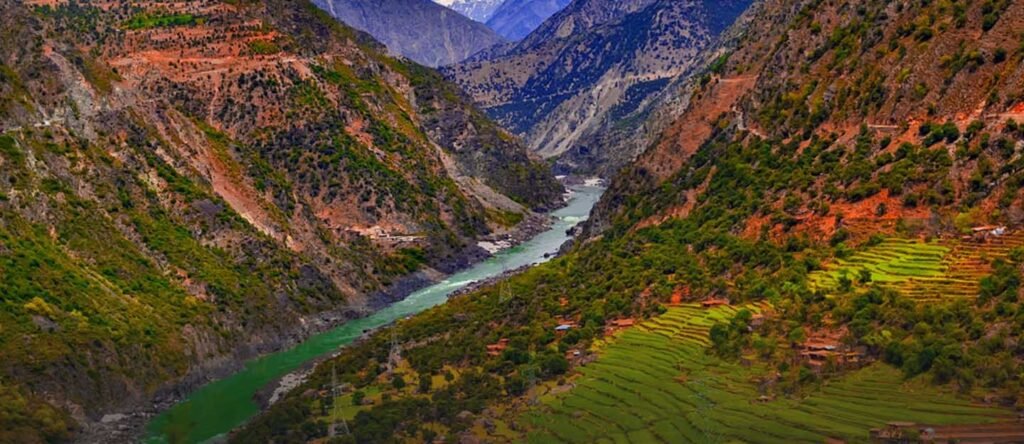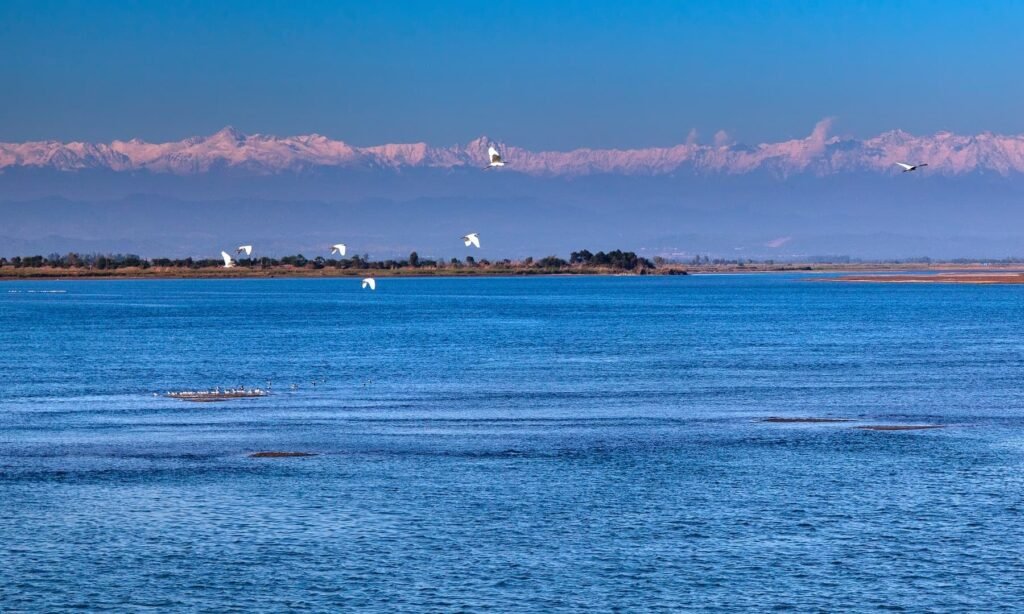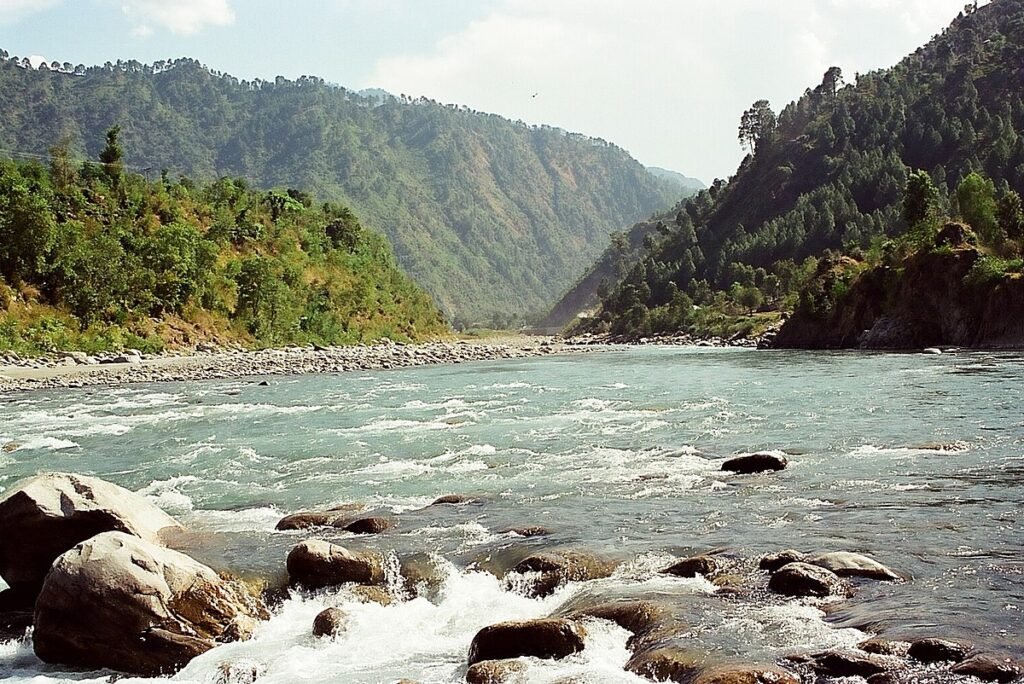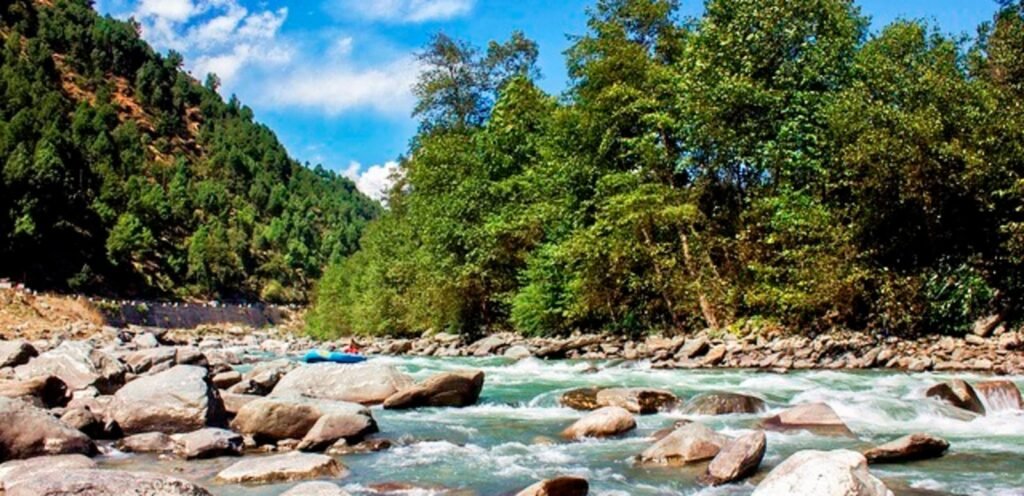Find the most efficient rivers in Pakistan and explore their water flow, sediment transport, and other attributes. Pakistan is a country that has beautiful scenic views, historic buildings, most horror places, and an abundance of natural resources. There are majestic mountains, wonderful coastal beauty, and lush greenery. The country has cities that are bustling with people from all over the world. Pakistan is one of the most populous countries in the world with a population of over 190 million people.
Rivers Of Pakistan

River Jhelum is a major river in the northern part of India and the eastern part of Pakistan. It is a tributary of the Chenab River and has a total length of about 725 kilometres (450 mi).
The word “Dara” means to conquer. The word “E-Azam” means “The highest”. When Dara-e-Azam reached the river, he saw it flowing in front of him and placed his flag on the bank to signify that he had conquered everything in front of him.
The Ganges is one of the most sacred rivers in India. It is also referred to as “Ganga Maa” which means “Mother Ganges”. The river is mentioned in many ancient Hindu texts like Mahabharat and Manu Smriti. Some people also link the etymology of the river with Sanskrit.
Alexander the Great is a famous figure in history and his conquests are still studied and debated by academics today. He was born into one of the most powerful kingdoms of his time, Macedonia, but through extreme military prowess, he came to rule over some of the largest empires in history. Most efficient rivers and valleys in Pakistan
The river rises from the Verinag spring located at the foot of Pir Panjal, Kashmir. Then it joins its tributaries Lidder River at Khanabal and Sind River at Shadipora in Kashmir Valley. It flows through a 400 km valley surrounded by imposing mountains and glaciers.
The river is also known as the “Sindhu” or “Indus”, and before it enters Pakistan, it is known as the Jhelum River. The river is mentioned in the Rigveda, the oldest of the four Vedas and a collection of hymns invoking its waters for purification rites.
There are several lakes attached to the River Jhelum. The lakes include:

River Jhelum is a tributary of the Chenab River in Punjab, India. Its high potential for power generation is due to its proximity to the Indus River. The government has taken steps to construct the following dams on this river. Most efficient rivers and valleys in Pakistan.
Mangla Dam is the largest earth-fill dam in the world. It was completed in 1967 and has a storage capacity of 7.3 km3. It is located on the Jhelum River near Mangla city of Pakistan's Punjab province.
Rasul Barrage, one of Iran’s largest dams, has been constructed on the Karun River in the southwest of the country. The dam is equipped with a 360-metre-high (1,181 ft) concrete arch and was inaugurated by Iran’s then president Mohammad Rezā Shāh Pahlavi in 1967.

Pakistan is a country rich in natural beauty and scenic views. From lush green plains to vast mountain ranges to majestic deserts, Pakistan has it all. River Chenab, just like River Jhelum, is split between two countries of India and Pakistan. Both countries share a mutual border which was established in 1948.
The Ganges is the most sacred river in Hinduism and Buddhism, where it is also known as Ganga or Gang. It is often described as the most polluted river in India, but many projects have been set up to restore its natural beauty.Most efficient rivers in Pakistan.
The Indus River, which was discovered and marked by the ancient Indian Vedic period, was later discovered by Alexander the Great in 325 BC. It is presently known as Uch Sharif. Jhelum and Ravi join Chenab, Beas joins S.
The combined stream is the largest river in Pakistan and is fed by the melting glaciers of the Himalayas. The river flows through a gorge near Skardu, then goes southwest for approximately 45 miles before joining the Indus River at Mithankot.

This is a river that runs through India and Pakistan. It is one of six rivers that make up the Indus System. The treaty, also known as the Indus Water Treaty, put an end to all disputes and wars over the water in this area.
The ancient Indian text of Mahabharata talks about the importance of the River Raavi. The text also mentions the powerful and pious Raavanyana, a son of King Sagar, who had a daughter named Ravi. This river is also mentioned in many Vedic texts as Iravati.
The Ravi river rises in the Himalayas of Himachal Pradesh, India, and drains into the Arabian Sea (Indian Ocean) through the Indus River. This river is an important lifeline for India and Pakistan as it helps irrigate crops in some of their most fertile lands.
The Ganga is the sacred river to Hindus and has been a source of life in India over the years. The river has its origins in the snow-covered mountains of Tibet, making it one of the major transboundary rivers. In 2017, plans were made to clean up the Ganga River. This will be done through multiple initiatives such as improved waste management, wastewater treatment plants and sewage treatment.
The Ravi River is a major river system that flows through India, Pakistan and Afghanistan. It is known for its dynamic waterfalls and natural beauty. One of the main attractions along the river is Multan, which was the capital city of the Mughal Empire in India. The Ravi River provides water to over 120 million people living on its banks in Pakistan and has helped build cities like Lahore.Most efficient rivers and valleys in Pakistan.

The Sutlej River flows through the northwestern Indian state of Himachal Pradesh, from the beautiful Himalayan Mountains to the plains of Punjab. Shiva, the Hindu god of destruction, is one of the most important gods in Hinduism: he is considered a master craftsman who brings awareness to what must be destroyed.
In 1960, India and Pakistan signed the Indus Waters Treaty that establishes legal control of the waters of the Sutlej river in Punjab. The treaty gives India rights to use up to 14 MAF annually, while Pakistan has rights to use up to 18 MAF annually.
The River Sutlej flows through the northern part of Pakistan and is a major source of hydroelectricity. The river flows through the Indian state of Jammu and Kashmir and joins River Indus. It has been important in the past for Pakistan due to its role in producing electricity that has helped many regions grow economically.

The Sindhu River which is also known as the Indus River originates in the Tibet-Qinghai Plateau and runs almost 3,800 kilometres before draining into the Arabian Sea. It is one of the four major rivers of South Asia and has a total surface area of 725,000 square kilometres.
The Indus River is one of the longest rivers in the world, running through China, India and Pakistan. A river is a natural resource that provides many benefits to the people living near it. It brings life to nearby villages, regulates the temperature of climate and helps prevent flooding.
The Ganges River is one of the longest rivers in the world and is also considered to be the holiest river in Hinduism. The river has a total drainage area exceeding 1,165,000 km2 (450,000 sq mi), with an average annual flow of around 243 km3 (58 cu mi). India has made it a point to take care of its unique river since ancient times by restricting human.
The most important factor in the success of a business is the quality of its product. It is often the case that a business owner can make a thousand promises but if they cannot meet their customer's needs then it will not last long.
Karachi is a city in southern Pakistan, in the province of Sindh. Karachi is the country’s most populous city and its cultural, economic, financial and industrial hub. Get an authentic source of products.